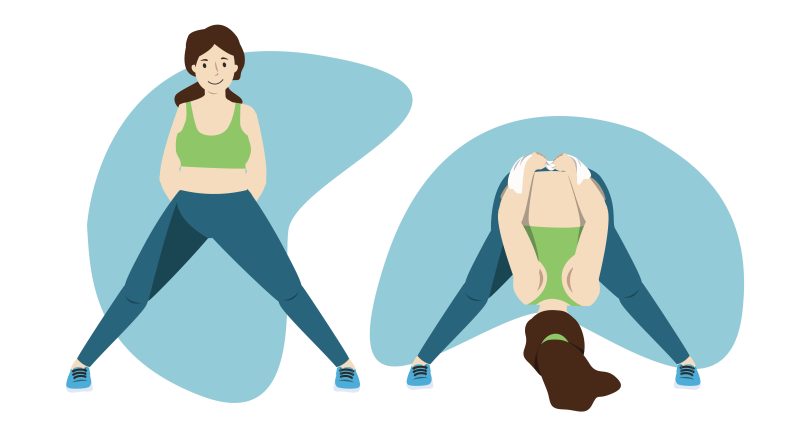
Taking breaks throughout the workday has benefits for both the employee and the organization, but many employees often neglect to take them. Skipping breaks can lead to faster burnout and higher stress levels. Employees stepping away from work for a few minutes increases their productivity, job satisfaction, mental health and well-being, and are overall more engaged in their work.
Taking a respite from work heightens focus when employees return, thereby bolstering their productivity. Additionally, breaks alleviate stress, which positively impacts employees’ mental health and well-being. These factors contribute to increased job satisfaction.
Breaks can prevent decision fatigue. Taking a break from making decisions within work allows employees to refuel to make better decisions than they would without a break (University of Illinois at Urbana-Champaign.
Taking breaks can increase creativity, promote healthy habits, and make employees feel more valued by their organization and supervisor .Additionally, supervisors or the organization promoting healthy habits during breaks encourages employees to take the time to make a healthy lunch or go for a walk. Movement breaks are also beneficial for emotional and physical health. Lastly, taking a break before becoming fatigued helps improve memory and focus, therefore allowing employees to better remember what they have learned. This allows work to penetrate employees’ brains as constant stimulation of the brain becomes tuned out over time (University of Illinois at Urbana-Champaign, 2011). Each of these benefits show that breaks improve employees’ quality of work, thus benefiting the organization, supervisors, and employees alike.
Easy Stretches
Simple stretches like standing calf raises, side bends, and shoulder shrugs can be done without leaving the work area. Stretch your arms up towards the ceiling while seated, or lift your legs up and rotate them before returning them to the ground. Alternate between sitting and standing every 30 minutes to decrease stiffness and improve circulation.
Exercises to Strengthen Your Core
Seated Leg Lifts
Sitting upright with your back straight, slowly lift your legs a few inches off the ground and hold for 5-10 seconds. Lower your legs and repeat 10-15 times.
Standing Side Bends
Stand with your feet shoulder-width apart and hands behind your head. Slowly flex to one side, hold for a few seconds, and then return to the starting position. Then switch to the other side. Repeat 10-15 times.
Plank
Place your forearms on the ground and extend your legs behind you. Make sure your body is in a straight line, tighten your abs, and hold for 30 seconds. Work up to holding for 1 minute.
Chair Yoga
Yoga is like music. The rhythm of the body, the melody of the mind, and the harmony of the soul create the symphony of life.” – B.K.S. Iyana
Chair yoga is an easy way to improve flexibility and manage stress while at work. Try neck stretches, seated spinal twists, or deep breathing exercises. Incorporating a yoga routine during breaks can refresh the mind and improve productivity.
Quick Cardio Bursts
Circulating blood and oxygen to the brain is essential for clear thinking and good health. Incorporate heart-boosting moves like jumping jacks, jogging in place, or dancing in your own space. Take 5 minutes several times throughout the day for elevated heart rate exercises.
Exercises to Relieve Neck and Shoulder Tension
The Chin Tuck
While sitting upright, gently tuck your chin inward until you feel a stretch. Hold for 5-10 seconds and then return to the starting position. Repeat 5-10 times.
Shoulder Roll
Shrug your shoulders upwards and then roll them forward and downwards. Repeat the process in the opposite direction. Repeat 10 times each direction.
Neck Stretch
Sit straight and tilt your head to one side, bringing your ear towards your shoulder. Use your hand to gently push your head down a bit further if needed. Hold for 15-20 seconds and then repeat on the other side. Repeat the process 2-3 times on each side.
Breathing Techniques for Stress Relief
Stress and anxiety can make breathing shallow and rapid. Practice diaphragmatic breathing by inhaling deeply and slowly through your nose, filling your lungs completely, and then exhaling slowly through your mouth. Repeat this process for 3-5 minutes to relax the mind and reduce stress.
Incorporating Movement Breaks into Your Workday
Set Reminders
Use a timer to remind yourself to stand up and move every 30-60 minutes.
Take the Long Route
Instead of taking the shortest route to the restroom or in-house café, take longer routes to squeeze in some extra steps.
Break and Walk
Take a walk during phone and video calls. A change of scenery is good for the mind and body.
Use Your Commute
Take advantage of public transport and use the extra time to stretch, read, or take a meditation break.
Benefits of breaks
1.Improved team collaboration: Talking breaks provide an opportunity for team members to come together, share information, and collaborate on projects, leading to enhanced teamwork and collective problem-solving.
2.Enhanced creativity: Engaging in conversations during breaks stimulates creativity by encouraging the exchange of ideas, perspectives, and innovative thinking. Fresh insights gained from these discussions can inspire new approaches and solutions to work-related challenges.
3.Stress relief and relaxation: Taking talking breaks allows employees to temporarily disconnect from work tasks, reducing stress and promoting relaxation. Conversations about non-work topics provide a mental break, helping individuals recharge and return to their tasks with renewed focus.
4.Strengthened social connections: Regular talking breaks foster social connections among colleagues, improving workplace relationships. Building positive relationships can create a supportive and inclusive work environment, leading to higher job satisfaction and employee engagement.
5.Enhanced mental well-being: Engaging in conversations with coworkers during breaks promotes positive mental well-being. It provides an outlet for individuals to express themselves, share their thoughts and feelings, and receive social support from colleagues.
6.Increased job satisfaction: Taking breaks to talk with coworkers can enhance job satisfaction. Feeling connected and having positive relationships at work contributes to a sense of belonging, which in turn improves overall job satisfaction and reduces burnout.
7.Learning opportunities: Conversations during breaks offer learning opportunities through knowledge sharing. Colleagues can exchange insights, discuss industry trends, or share their expertise, promoting continuous learning and professional development.
8.Improved problem-solving: Informal discussions during breaks can lead to improved problem-solving skills. Brainstorming and seeking advice from colleagues during conversations can provide different perspectives and fresh ideas, aiding in more effective problem resolution.
9.Boosted morale and motivation: Engaging in conversations and building relationships with coworkers during breaks can boost morale and motivation. Positive social interactions create a sense of camaraderie and foster a supportive work culture, resulting in increased job satisfaction and motivation to perform well.
10.Better work-life balance: Taking regular talking breaks encourages a healthy work-life balance. It allows employees to step away from work-related stressors and connect with others, promoting overall well-being and preventing burnout.
Remember, the benefits of talking breaks can vary depending on the individual and the work environment. It’s important to find a balance that suits your needs and respects any company policies regarding break times.
How to encourage coworkers or subordinates to take breaks
1.Provide incentives for employees to take breaks
2.Talk about the benefits of taking breaks .
3.If you are a supervisor, set an example and take breaks yourself.
In a work culture that often prioritizes constant productivity, it is crucial to recognize the importance of taking breaks. Breaks are not a luxury but a necessity for maintaining employee well-being, productivity, and job satisfaction. Employers should foster a healthy break culture by implementing policies that support regular breaks and creating a positive work environment that values downtime. By doing so, organizations can cultivate an engaged, productive, and healthy workforce.






